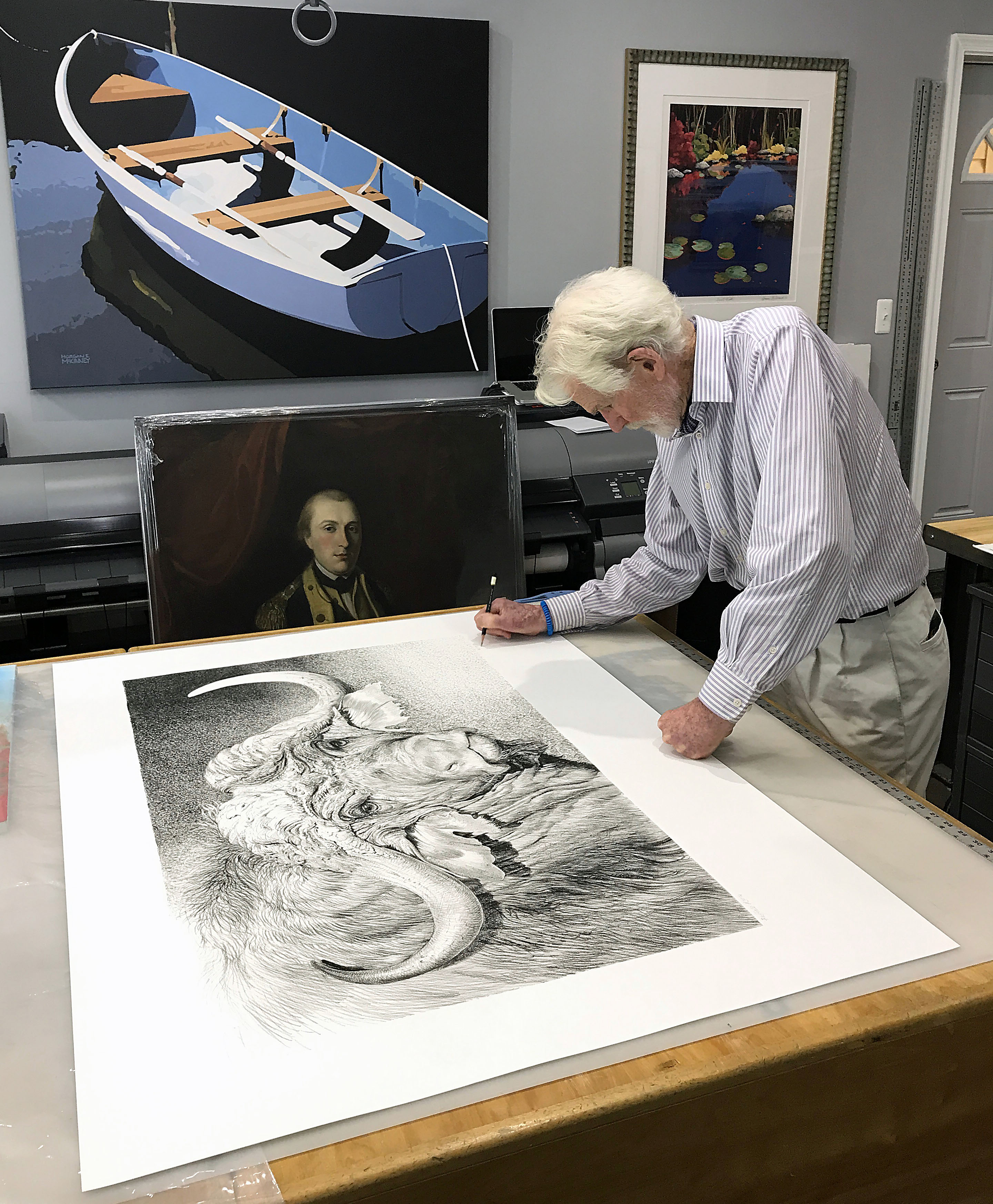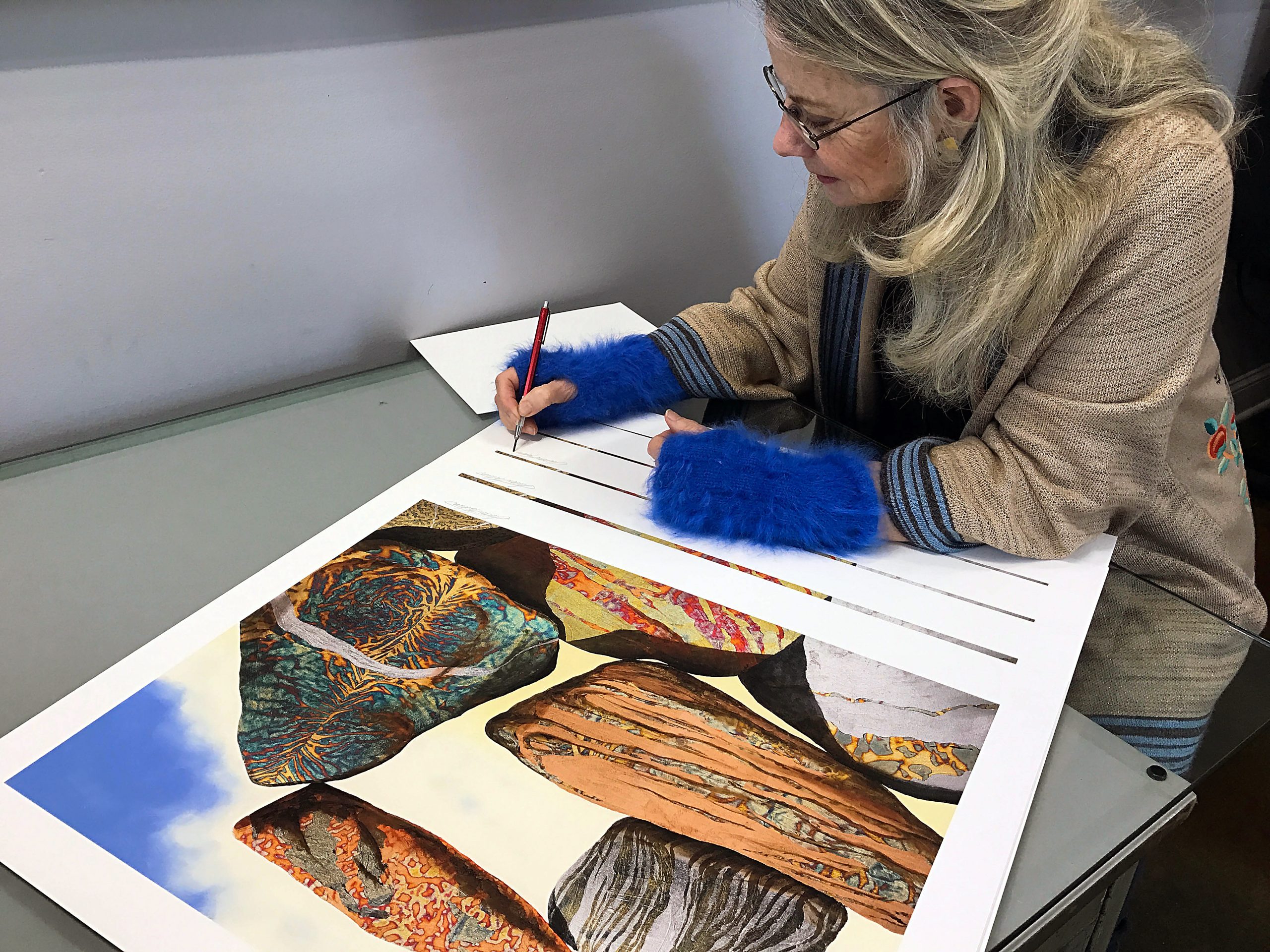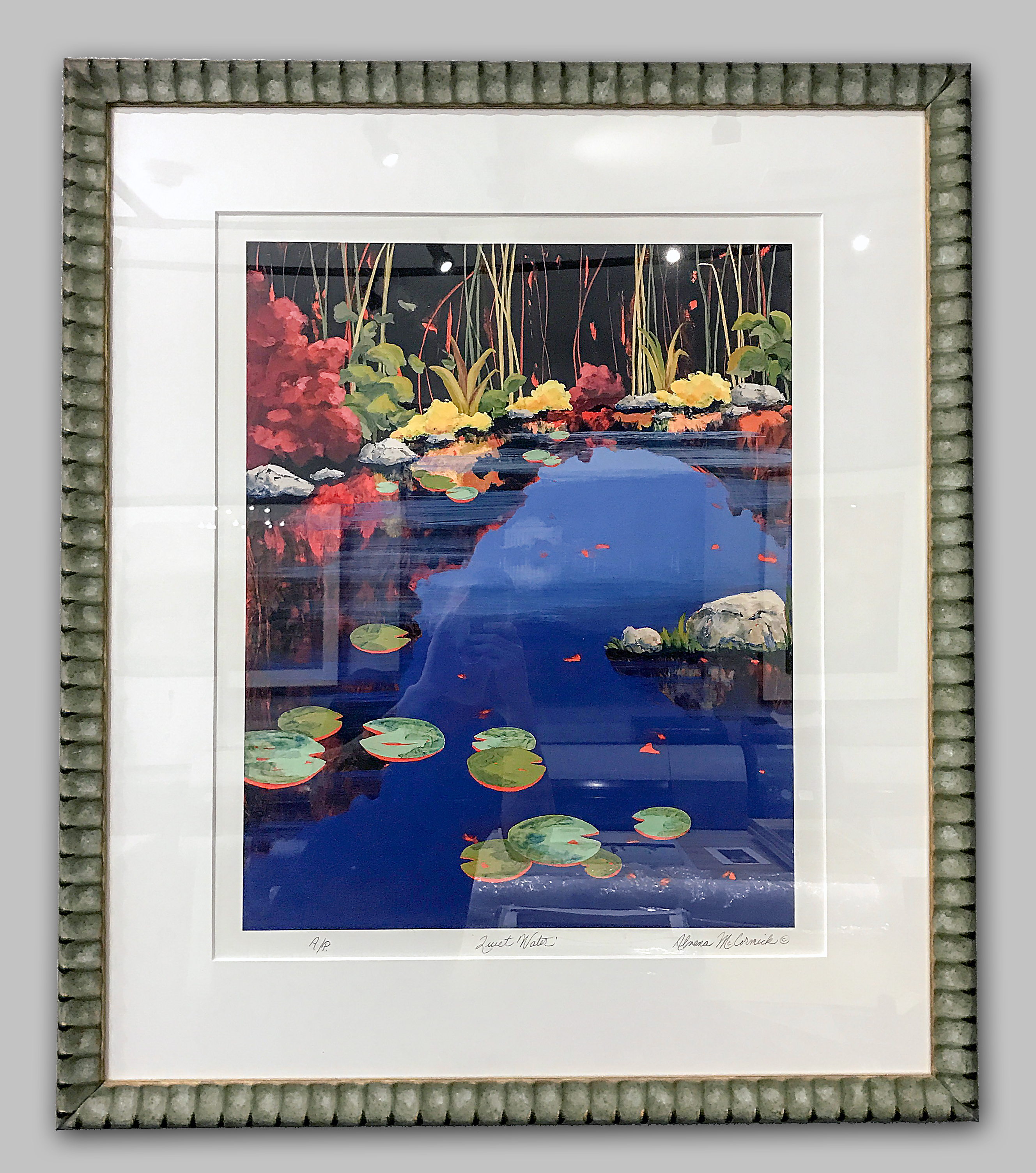Articles
Signing Your Art Prints
Artist Robin Hill signing a print reproduction
We often have artists ask us how they should sign their prints. The ultimate answer is it’s up to you. You’re the artist. So, generally speaking, as long as your signature doesn’t distract from your print then it should be acceptable.
Do not use a normal ball point pen or sharpie! You must use a pencil or a paint pen. Specifically make sure if it’s a pen that it is acid free or archival rated. Regular ball point pens and sharpies will bleed over time, ruining your print.
Generally paper prints are signed just below the image area. The edition number is on the left, title of the artwork in the middle, and signature on the right. The title of the artwork is not always necessary, this is personal preference.
When you bring a piece in to be reproduced we will discuss whether or not to digitally remove signatures from the original artwork before we print it. If we remove the signature from the piece it is usually just to make sure that when the print is signed it is not distracting. For example, if your signature is already at the bottom right in your original and you make a print of that piece, it will appear as if you signed it twice, creating a distraction. In this case it might be best to remove the signature in the piece and add a new one below the print once it’s printed.
There is also an advantage to leaving the signature in. Some artists like to keep their original signature in addition to signing the print itself. This leaves two visible signatures on the print. Sometimes an artist that is worried about a collectors impression of authenticity may leave the signature in the reproduced original, as a way to certify that the original artwork is theirs. Other artists don’t like the visual look of having two signatures, so they have it removed before we print. There is no right or wrong way!
Signing stretched canvas prints is a little different. Signing on the front would require signing over top of the printed image, which some artists/photographers do not want to do. In this case, they will sign on the back of the canvas. If you are doing this, make sure you have the canvas on a hard surface such as glass, so that writing on the back will not indent the canvas. If you want something a bit more visible, you could consider putting your signature on the side of the canvas or on the front.
No matter where you sign your prints, make sure you are not using anything that will bleed or cause your prints to yellow. Paper prints, and the back of canvas prints, should be signed with pencil. Pens, sharpies, and other markers can bleed and cause your paper prints to yellow over time.
A certificate of authenticity is also a great addition to your print. We have a sample certificate here that you can print out at home and fill in the information. This is the certificate that we’ve made and offer here, but you can also make your own to suit your preferences. It should include information about your print and the type of materials used to make it. This will certify the quality and authenticity of your print, and since it is signed by you, the artist, it is another way for people to identify the artwork and print as originating from you. This information supplied with each print can lead people to you to purchase more work if they are interested.
A couple last things to consider including with your print will be an artist bio, a blurb about the printed piece, and anything else you find relevant to include with your print. Your inclusion of all this information with each print accomplishes several things. First, it really dresses the print up. It makes the print seem that much more important and valuable when you give a packet of information with the print that is also nicely packaged. Consider getting presentation kits for your prints when you are getting ready to start selling.
Artist Susan Makara signing a set of prints
Second, is future sales. If anyone ever sees the piece and wants one you can be easily contacted for more work. All they have to do is look at the back of the frame and see all your contact information. Third, way out into the future your prints can be identified easily and the extra information can help with accurate appraisals.
One last thing you can consider adding to your print is an embossing stamp to further hinder anyone’s ability to pirate your printed work.
Ultimately, your hand signature is one of the best ways to authenticate your prints.
Further reading selection: Finishing Your Fine Art Canvas Prints
Example of a signed giclee print by artist Alvena McCormick



